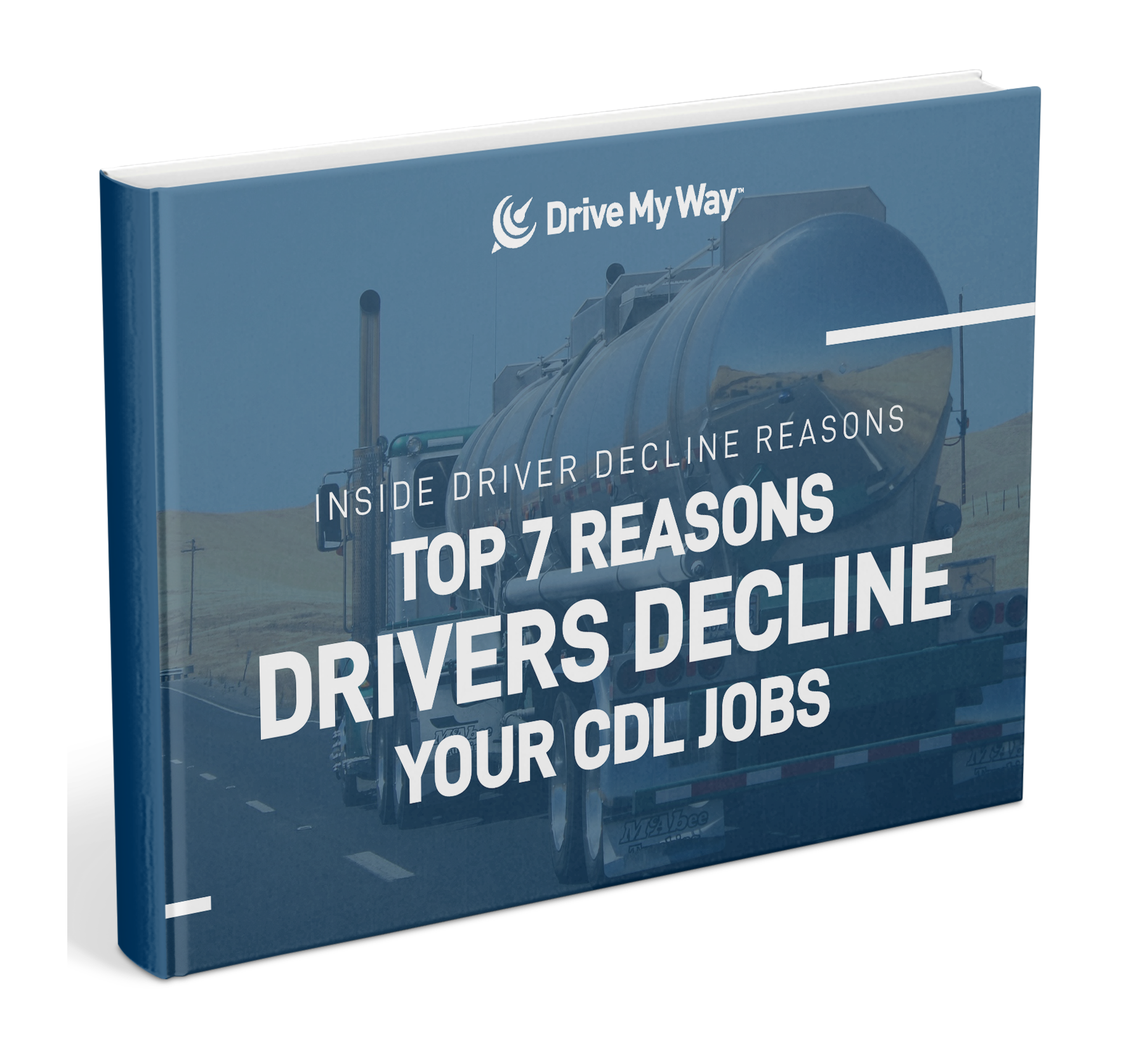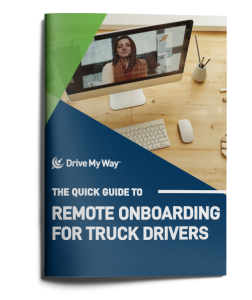
Just like any other employees, truck drivers consider a variety of factors when deciding which company to work for. Some factors are obvious, such as compensation and benefits. Some other factors may surprise you. As a recruiter, you may think that you’ve all but sealed the deal on a new candidate but then they end up declining the job. Drivers may not be open with you about why they declined the job, but it is useful for recruiters to have this information.
Drive My Way’s unique service matches drivers with companies based on professional qualifications and lifestyle choices. Sometimes our drivers turn down these offers by employers. We’ve asked our drivers why they turn down the jobs, and the results may be eye-opening. According to our Drive My Way drivers, here are the top seven reasons truck drivers decline jobs.
1. Another Job
The number one reason why drivers decline jobs is because they got scooped up by someone else. They were offered another job by a competitor and they thought the offer was too good to pass up.
As a recruiter, you know this is always a possibility you should try to avoid. Always be in touch with top prospects and know when is a good time to offer the position and sign them on. If you wait too long, you’re more than likely to lose the candidate to a recruiter from another company who was just quicker. In the Drive My Way database, over 3,200 drivers cited this as the reason they decline other jobs.
2. Salary
Okay, this one shouldn’t come as a major shock—drivers care about compensation. Considering the reality of the driver shortage, drivers have considerable bargaining power to be able to look for a better deal elsewhere. In the Drive My Way database, a whopping 1,500 drivers declined jobs because of the compensation.
The average yearly salary for truck drivers is around $41,000. But industry average doesn’t paint the whole picture. Driver pay should be dependent on a number of factors including years of experience, type of haul, and the overall benefit package. Offering packages above the industry average is the best practice, but make sure to take into account other factors when crafting a compensation package.
Bottom line, if drivers aren’t being payed as much as they think they deserve, they will not think twice about declining your job offer and looking elsewhere.
3. Hours, Schedule & Home Time
The third most cited reason truck drivers decline jobs is work schedule and home time. The average driver works 70 hours a week and goes 8 days before taking a day off.
That’s a tough schedule, especially for those with families. Finding time to spend with family can be difficult enough, but is especially rough for OTR truck drivers. In the Drive My Way database, over 1400 candidates cited schedule as a reason they declined job offers.
When recruiting candidates, take care to offer packages that will suit their schedule preferences. Drivers aren’t looking to slack off half the week—they’d just like to keep some time for home time. Get to know their family situations, lifestyle, work habits, and keep these in mind while offering packages. Keeping home-time a consideration not only shows drivers that you care about them as employees but builds a more productive and motivated workforce. Drivers are more likely to be retained long-term if they are happy with their work schedules.
But wait, I thought there were 7 driver decline reasons?
These are just the top three reasons truck drivers decline jobs offered by recruiters. But, this is just the tip of the iceberg. For the complete list of reasons that truck drivers decline jobs, download the complete ebook below.






.jpg)






